எந்தவொரு வீட்டையும் மிகவும் துடிப்பாகவும் புத்துணர்ச்சியுடனும் உணர வீட்டு தாவரங்கள் அற்புதமான வழியைக் கொண்டுள்ளன. பெரும்பாலான வீட்டு தாவரங்கள் வளிமண்டலத்தை மேம்படுத்தவும், காற்றின் தரத்தை மேம்படுத்தவும், அமைதியான உணர்வை வழங்கவும் உதவுகின்றன, ஆனால் அனைத்து தாவரங்களும் உங்கள் வீட்டின் உட்புறத்திற்கு ஏற்றது அல்ல. உண்மையில், அவர்களில் சிலர் குழந்தைகள் அல்லது செல்லப்பிராணிகளுக்கு மறைக்கப்பட்ட ஆபத்துக்களை ஏற்படுத்தலாம். சில தாவரங்கள் ஒவ்வாமையைத் தூண்டலாம் அல்லது மிகவும் அனுபவம் வாய்ந்த ஆலை உரிமையாளரைத் தவிர வேறு எவருக்கும் பராமரிக்க கடினமாக இருக்கும் வாழ்க்கை நிலைமைகள் தேவைப்படலாம்.
நீங்கள் ஒரு செடியைத் தேர்ந்தெடுப்பதற்கு முன், ஒரு குறிப்பிட்ட தாவரத்தின் குறைபாடுகளைப் புரிந்துகொள்வது அவசியம், அது உங்கள் வாழ்க்கை முறை மற்றும் சூழலுக்கு பொருந்துகிறது என்பதை உறுதிப்படுத்தவும். மிகவும் சிந்தனைமிக்க தாவரத் தேர்வு உங்களை கவலையற்ற மற்றும் தொந்தரவு இல்லாத தோட்டத்தை உருவாக்க அனுமதிக்கும்.
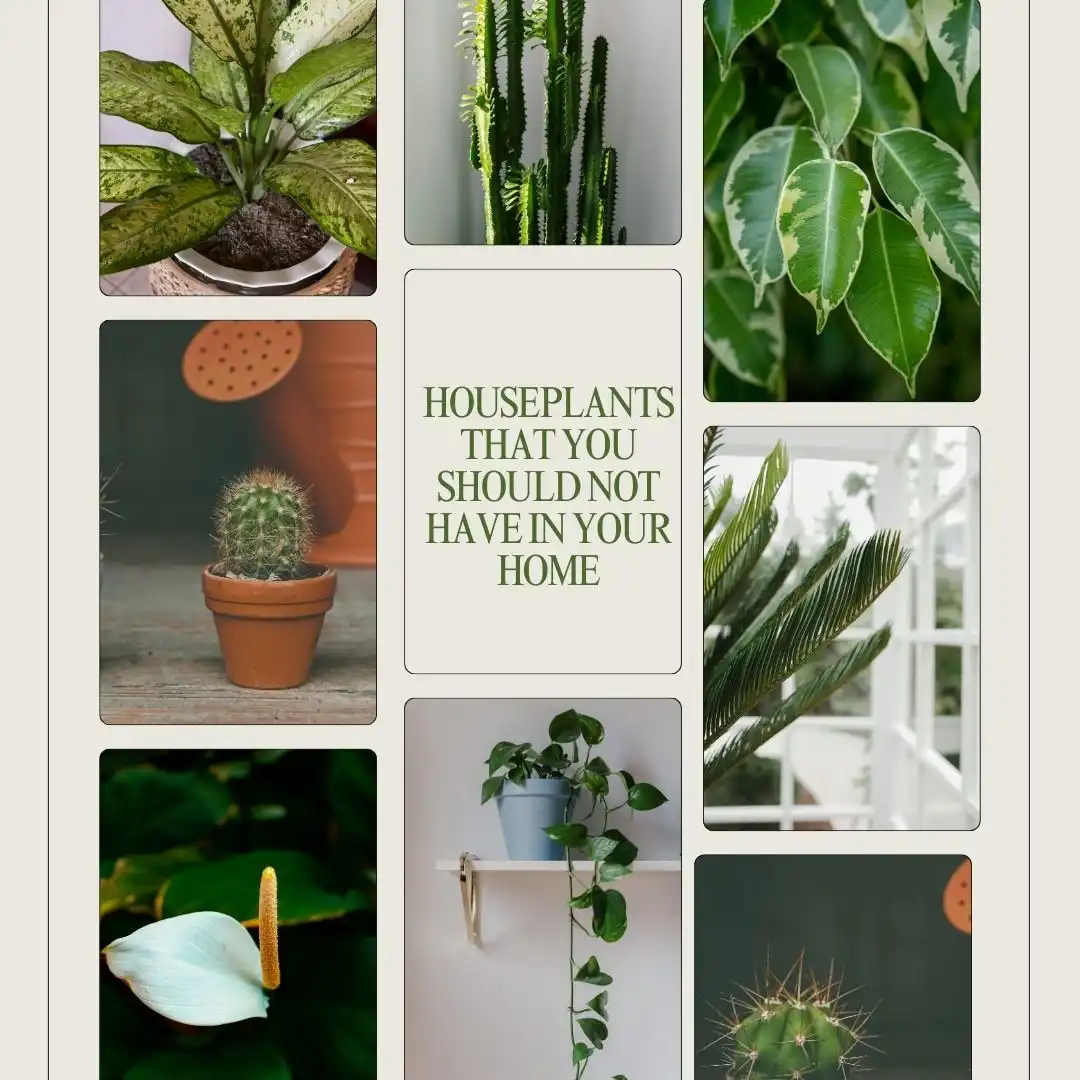
உங்கள் வாழ்க்கை இடத்திற்கு எந்த வீட்டு தாவரங்களைத் தேர்ந்தெடுக்கும்போது எப்போதும் உங்கள் சொந்த சூழ்நிலைகளைக் கவனியுங்கள். அனைவரின் வீட்டுச் சூழல், வாழ்க்கை முறை மற்றும் வீட்டுப் பங்காளிகள் ஒரே மாதிரியாக இருப்பதில்லை, எனவே உங்கள் வீட்டு தாவரத் தேர்வுகள் உங்கள் அண்டை வீட்டாரின் விருப்பங்களிலிருந்து வேறுபட்டிருக்கலாம். உதாரணமாக, செல்லப்பிராணிகளுக்கு நச்சுத்தன்மையுள்ள வீட்டுச் செடி, சொந்தமாக செல்லப்பிராணிகள் இல்லாதவர்களுக்கு முற்றிலும் பொருத்தமானதாக இருக்கலாம். வீட்டு தாவரங்களைத் தேர்ந்தெடுப்பதில் உங்கள் சொந்த சிறந்த தீர்ப்பை நீங்கள் பின்பற்ற வேண்டும்.
ஒலியாண்டர்
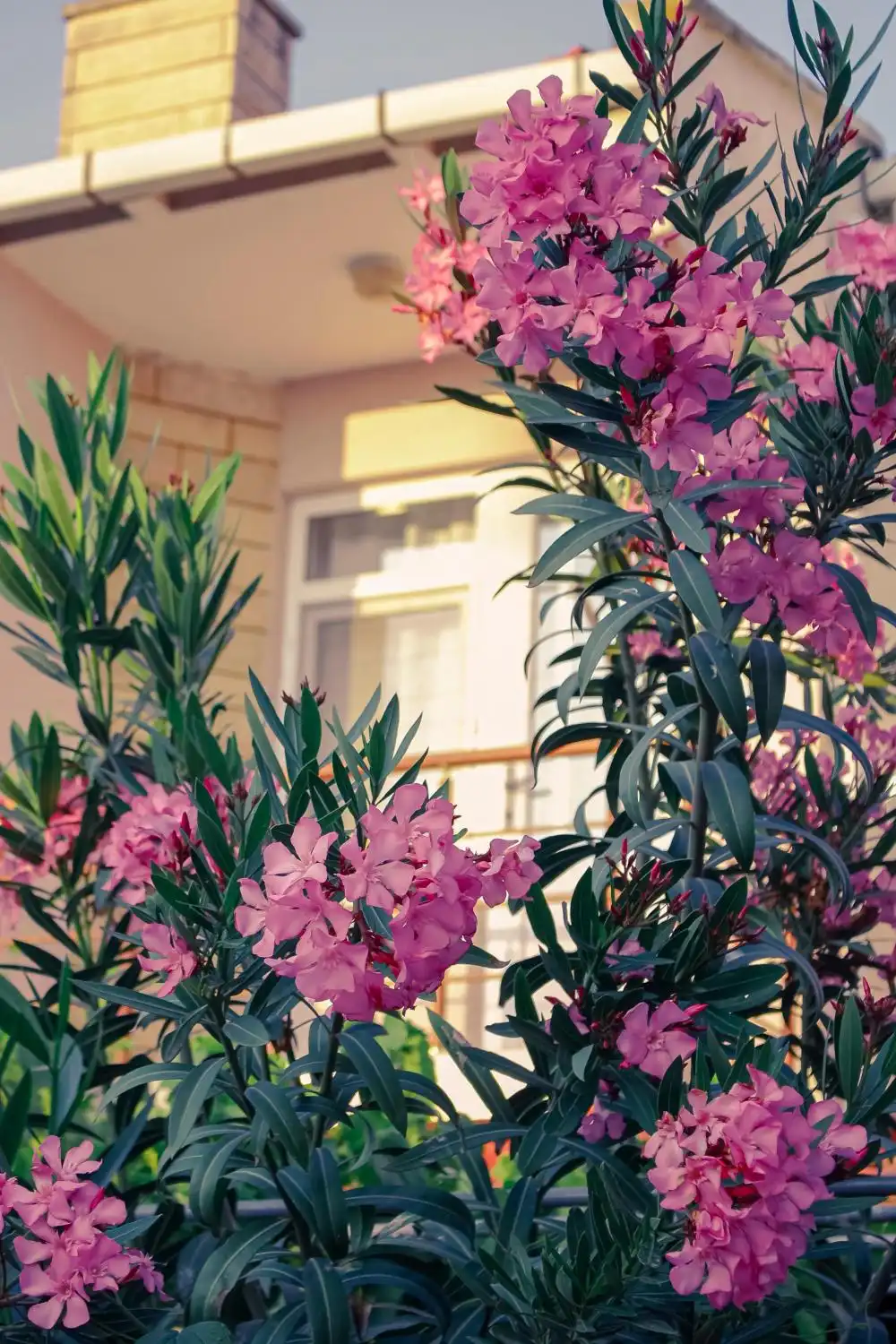
ஒலியாண்டர் என்பது வெள்ளை, இளஞ்சிவப்பு அல்லது சிவப்பு நிற மலர்களைக் கொண்ட ஒரு பசுமையான புதர் ஆகும். அதன் வறட்சி எதிர்ப்பு காரணமாக இது வெளிப்புற தாவரமாக பிரபலமாக உள்ளது, ஆனால் இது உட்புற வளர்ச்சிக்கு ஏற்றது.
இலைகள், பூக்கள், தண்டு மற்றும் சாறு உட்பட இந்த தாவரத்தின் அனைத்து பகுதிகளிலும் நச்சு கலவைகள் உள்ளன, அவை ஒலியாண்ட்ரின் என்று அழைக்கப்படுகின்றன. இது சிறிய அளவில் கூட உட்கொண்டால் கடுமையான விளைவுகளை ஏற்படுத்தும். குமட்டல், வாந்தி, வயிற்று வலி, சீரற்ற இதயத் துடிப்பு மற்றும் கடுமையான சந்தர்ப்பங்களில், இதயத் தடுப்பு ஆகியவை தாவரத்தை உட்கொள்வதன் அறிகுறிகளாகும். தாவரத்தை கையாளுவது கூட உணர்திறன் வாய்ந்த சருமம் உள்ளவர்களுக்கு தோல் எரிச்சல் மற்றும் வெடிப்புகளை ஏற்படுத்தும். இந்த வீட்டு தாவரத்தை செல்லப்பிராணிகள் மற்றும்/அல்லது குழந்தைகள் உள்ள வீடுகளில் தவிர்க்க வேண்டும், மேலும் அதை கவனமாக யாராலும் கையாள வேண்டும்.
காலடியம்
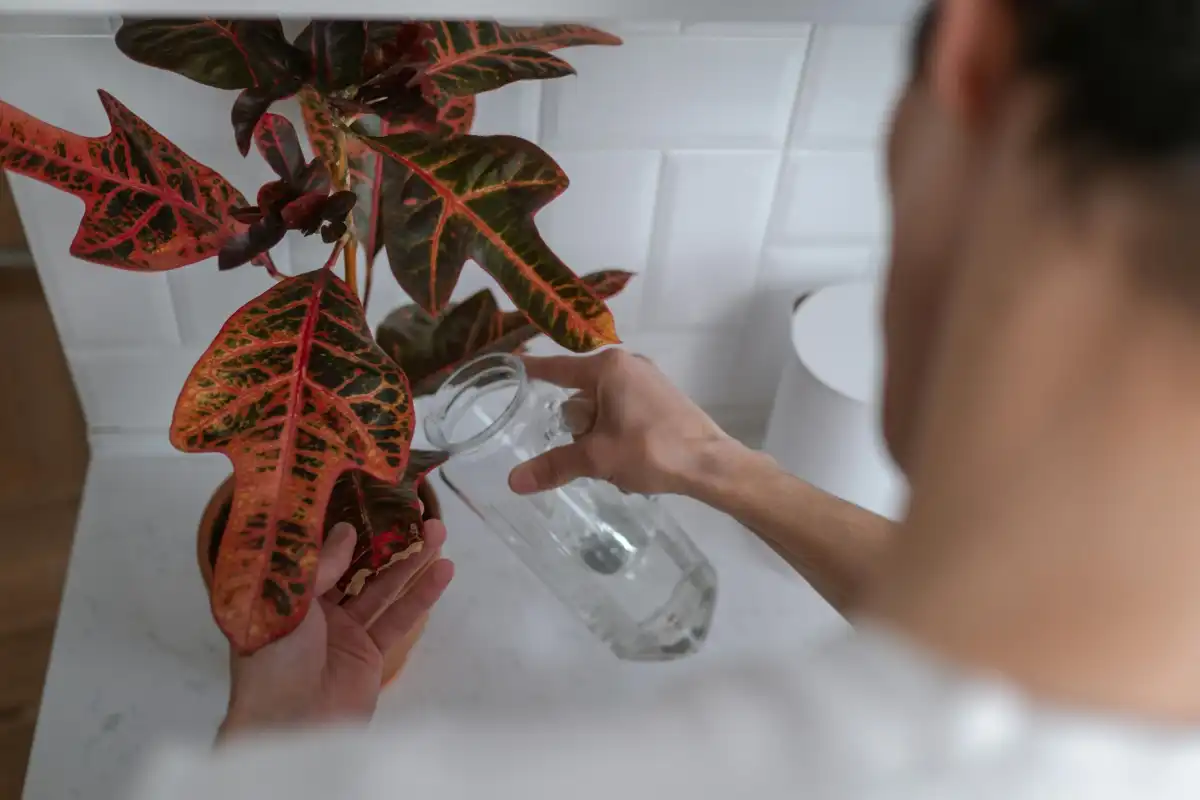
கலாடியம் என்பது வெப்பமண்டல தாவரங்கள் ஆகும், அவை பச்சை, இளஞ்சிவப்பு மற்றும் சிவப்பு உள்ளிட்ட வண்ணங்களில் மாறுபட்ட, இதய வடிவிலான இலைகளைக் கொண்டுள்ளன. இந்த ஆலை அதன் அழகிய அழகுக்காக விரும்பப்பட்டாலும், இந்த தாவரத்தின் அனைத்து பகுதிகளிலும் கால்சியம் ஆக்சலேட் படிகங்கள் உள்ளன, அவை உட்கொண்டால் குறிப்பிடத்தக்க எரிச்சலை ஏற்படுத்தும். இந்த செடியை சாப்பிடுவதால் வாய், தொண்டை மற்றும் இரைப்பை குடல் பகுதியில் எரியும் உணர்வு ஏற்படும். உமிழ்நீர், குமட்டல், வாந்தி, மற்றும் விழுங்குவதில் சிரமம் ஆகியவை பிற சாத்தியமான பக்க விளைவுகளாகும். பெரிய இலைகளை விழுங்கினால் மூச்சுத் திணறல் ஏற்படும்.
இந்த தாவரங்கள் செல்லப்பிராணிகள் மற்றும் அவற்றின் வண்ணமயமான இலைகளால் ஈர்க்கக்கூடிய சிறு குழந்தைகளிடமிருந்து சிறப்பாக வைக்கப்படுகின்றன.
Sago Palm
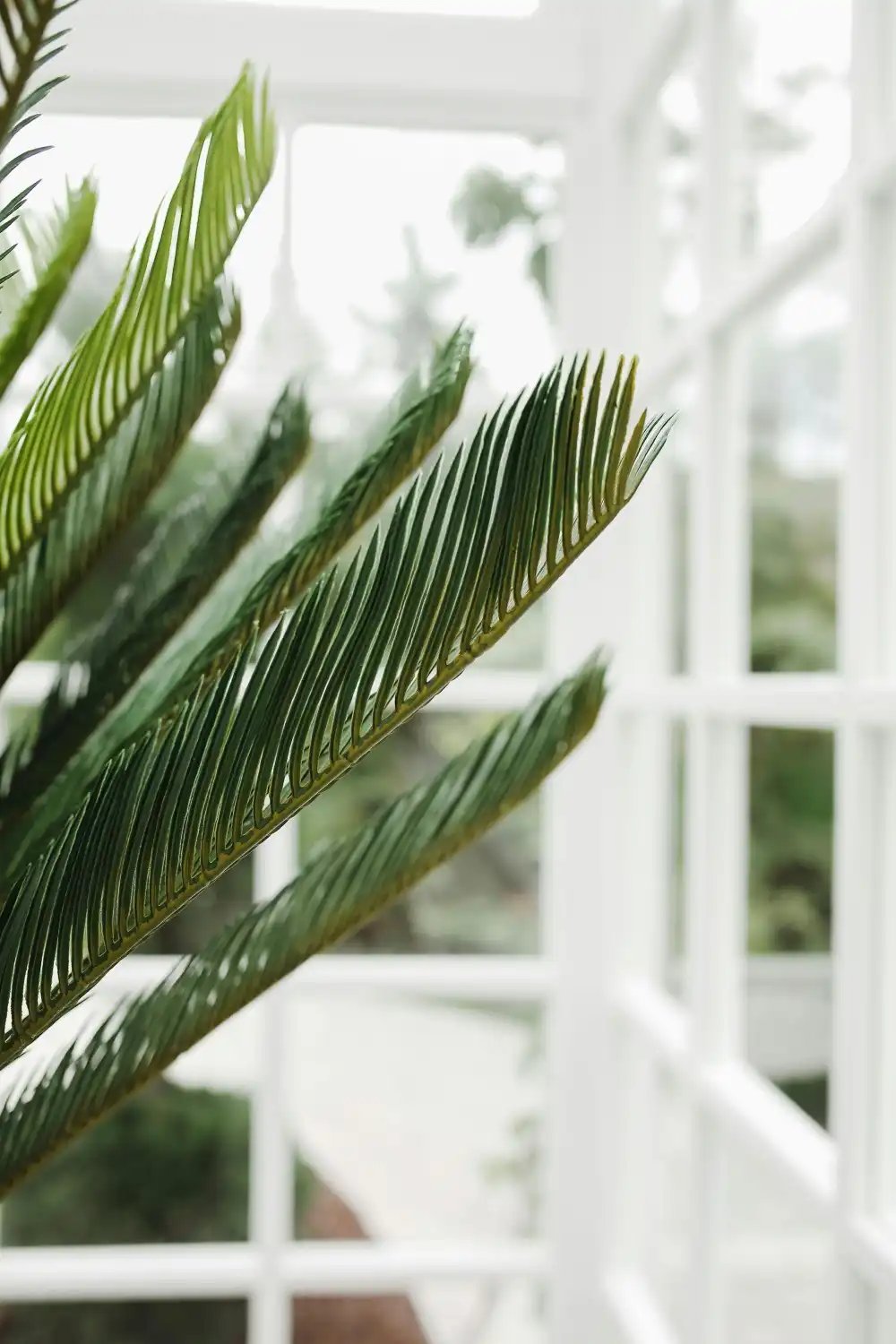
சாகோ பனை ஒரு பிரபலமான வீட்டு தாவரமாகும், ஏனெனில் அதன் வேலைநிறுத்தம் மற்றும் அலங்கார பனை போன்ற தோற்றம். இருப்பினும், இந்த வீட்டு தாவரம் விலங்குகள் மற்றும் மனிதர்களுக்கு மிகவும் நச்சுத்தன்மை வாய்ந்தது. இந்த தாவரத்தின் அனைத்து பகுதிகளிலும், குறிப்பாக விதைகளில், சைகாசின் உள்ளது. இந்த நச்சுத்தன்மையை சிறிய அளவில் உட்கொண்டால், வாந்தி, வயிற்றுப்போக்கு, சோம்பல், கல்லீரல் செயலிழப்பு போன்றவை ஏற்படும்.
For pets, particularly dogs, the consequences of eating this plant are often fatal without immediate treatment. Signs that a pet has been poisoned by this plant include excessive thirst, bruising, and neurological signals, such as tremors or seizures. Given the high toxicity of this plant, it is best kept out of homes with small children and pets.
Easter Lilies/Day Lilies
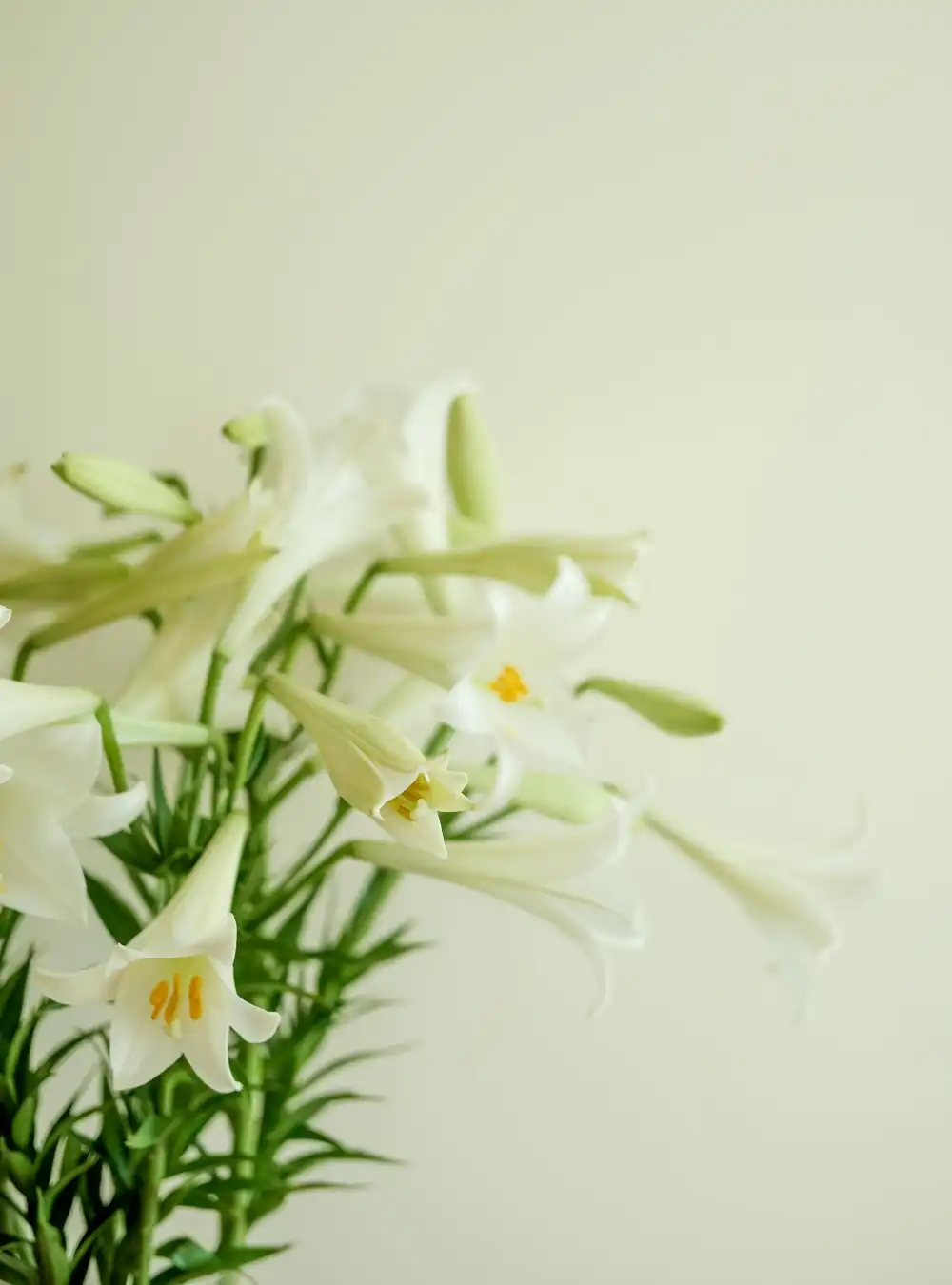
Lilies, like Easter or day lilies, are popular during the spring season because of their attractive and fragrant blooms and their symbolism of rebirth and renewal. Unfortunately, these plants are extremely toxic for cats, with all parts of the plant posing a serious health risk. Ingesting a lily, even in small amounts, can cause liver failure in cats. Early symptoms of poisoning include drooling, vomiting, and lethargy, which can progress to more serious effects, such as dehydration and disorientation. This can potentially lead to fatal consequences if left untreated.
This plant is not toxic for dogs or humans, but it is best kept out of homes with cats as pets.
Peace Lily
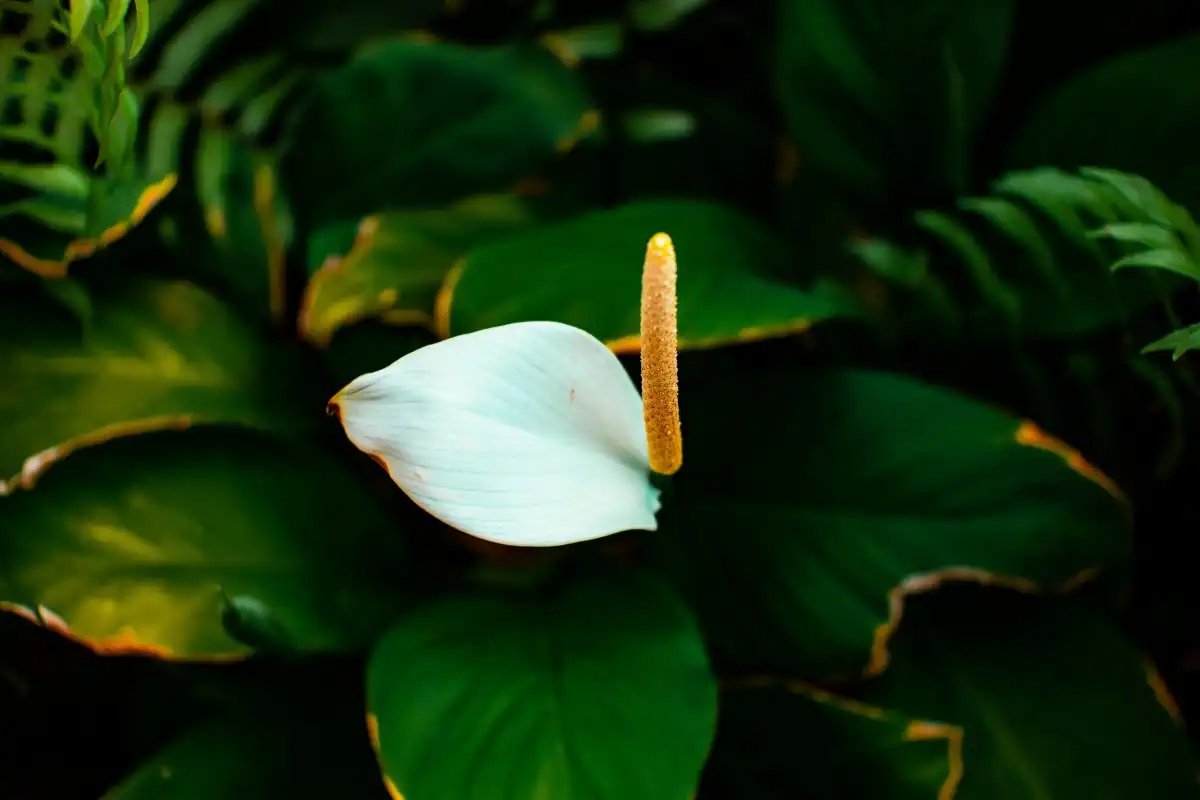
Peace lilies are a popular houseplant because of their easy maintenance, glossy green leaves, and attractive white blooms. Despite their widespread use, these plants can pose a risk to humans and pets because of the calcium oxalate crystals in the leaves and flowers.
If peace lilies leaves or flowers are ingested, they can cause swelling of the mouth and throat, drooling, and difficulty swallowing. Even though this is rarely life-threatening, it can be distressing, especially for small pets, and require a costly vet visit. Because of its negative side effects, this plant works best in homes with older children and no pets.
Aloe Vera
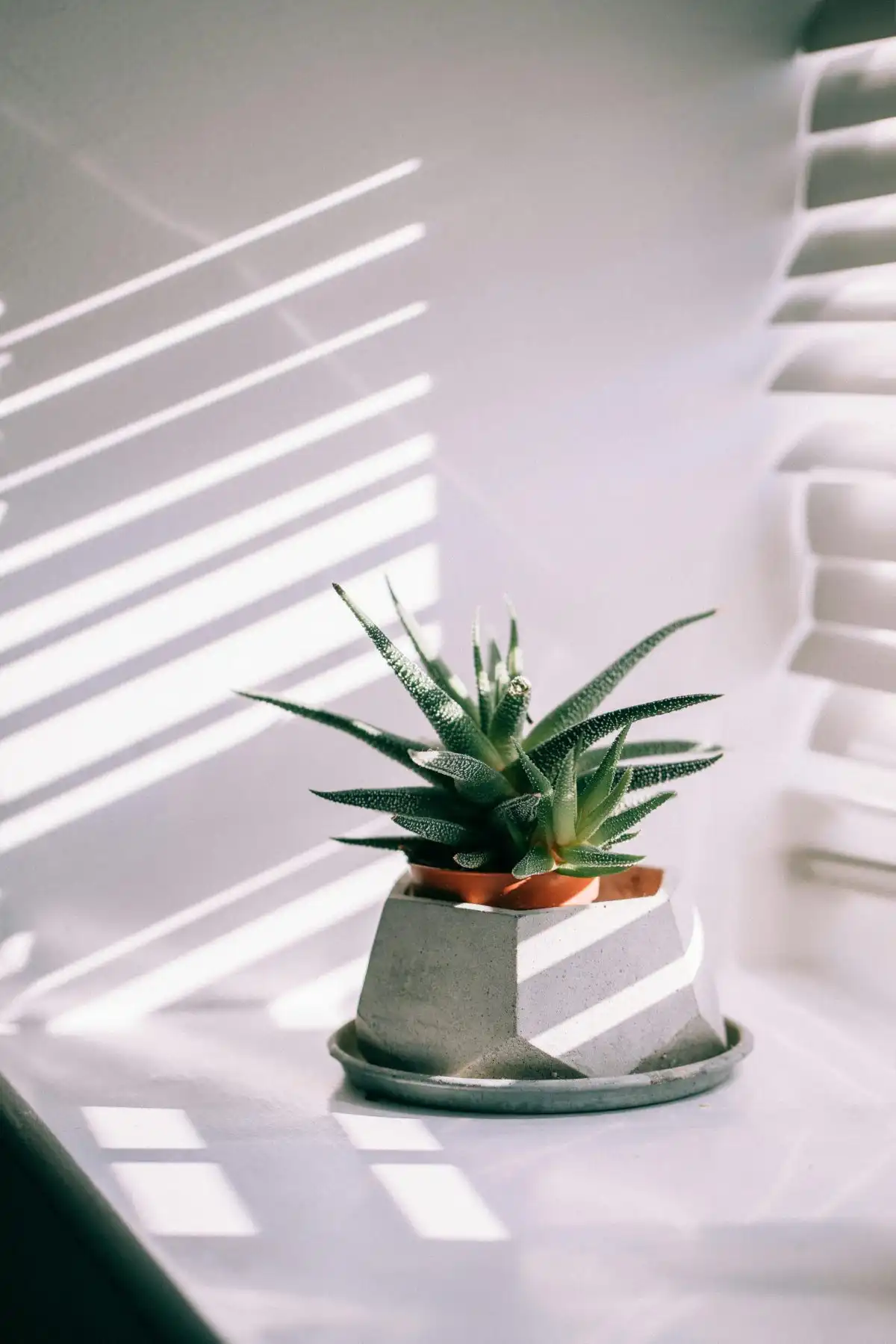
Aloe vera is a popular houseplant for its fleshy leaves that contain a gel that is thought to be soothing for skin irritations. While the gel has medicinal benefits for humans, aloe vera plants can cause irritation to pets if they eat it.
Aloe vera plants have a compound called anthraquinones, which can have a laxative effect and cause vomiting, diarrhea, lethargy, and abdominal pain in pets. Humans should also avoid consuming aloe vera because consuming aloe latex can result in some of the same side effects, such as abdominal irritation and kidney problems with prolonged use. Topical use of aloe may also cause skin irritation in certain people. Because of the potential negative side effects, it is best to keep this plant out of reach of animals.
Pothos
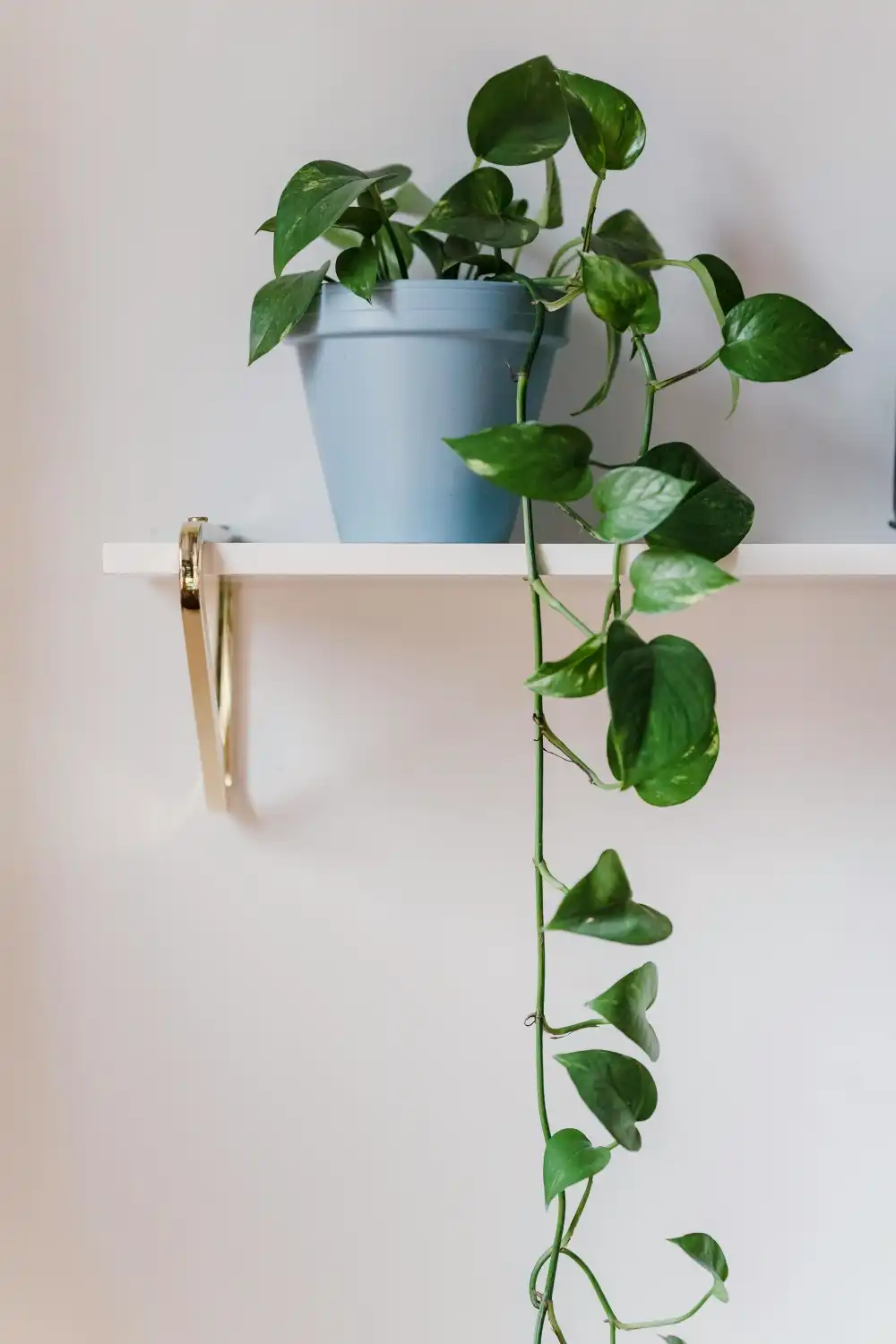
Pothos, also known as devil’s ivy, is a popular houseplant due to its ease of growth and graceful trailing leaves. Pothos leaves, like other houseplants, contain calcium oxalate crystals, which can be harmful to the health of small children and pets, but are especially harmful to cats and dogs. Consuming this plant, in particular, can cause irritation and swelling in the mouth and throat. If your pet eats this plant, you may notice them drooling, vomiting, or having difficulty swallowing.
This plant’s prolific growth and trailing habit make it difficult to keep away from children and pets, but you should do your best to keep it out of reach.
Weeping Fig
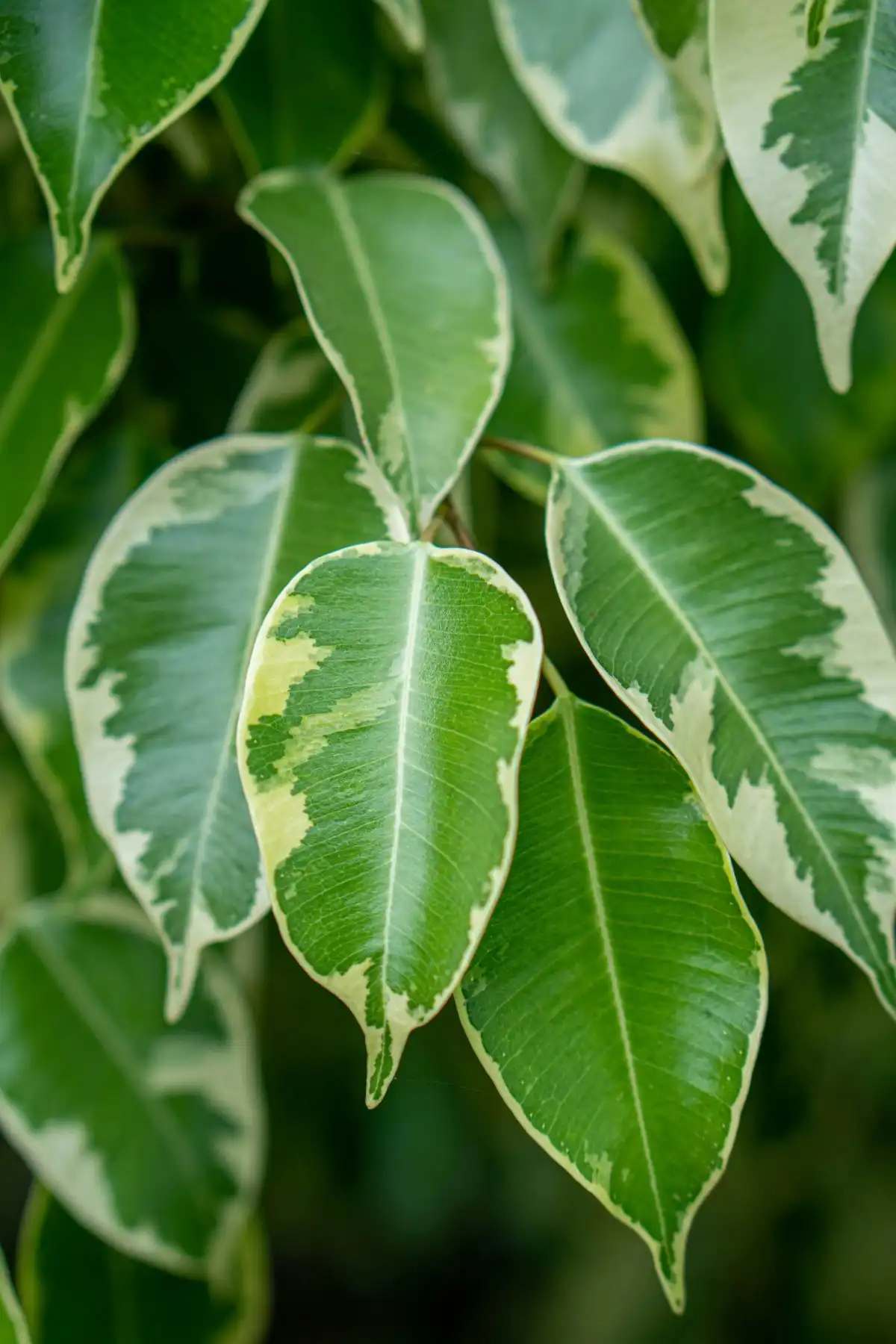
Weeping figs are popular indoor trees thanks to their graceful, arching growth pattern and lush green foliage. These trees produce latex sap, which can cause allergic reactions, such as skin rashes and dermatitis. This is especially true for those who are allergic to latex.
Weeping figs can also cause problems if the leaves are eaten, like nausea and vomiting, especially for pets. While they are not considered toxic, you may need to practice caution if your pet shows a proclivity to eat leaves. If you suspect your pet has eaten weeping fig foliage, look for symptoms such as drooling or digestive distress.
Euphorbia
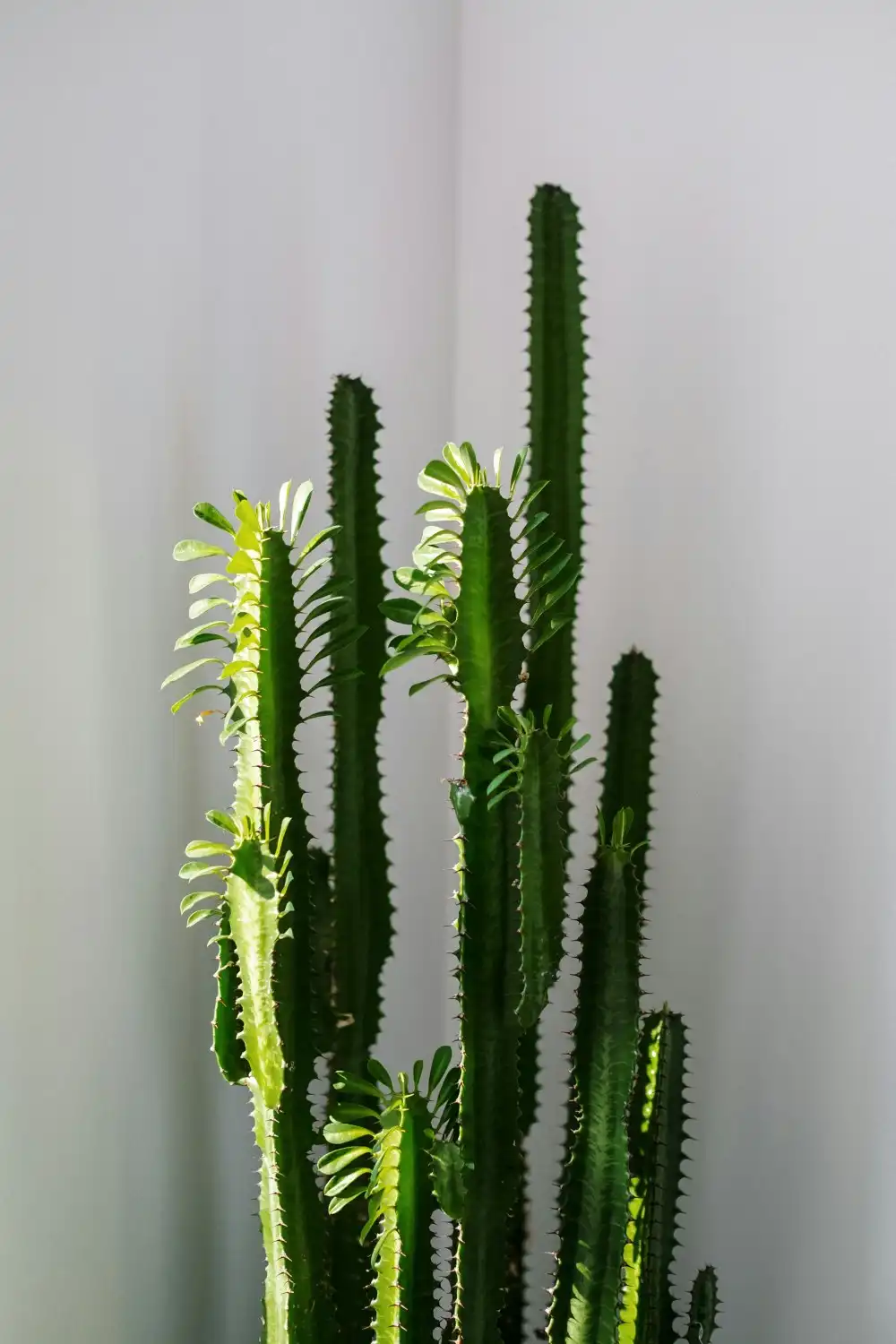
Euphorbia is a large genus of plants that includes the popular poinsettia. Euphorbias are well-known for their distinctive shapes and colorful bracts, but they produce a milky latex sap that can be harmful to human and animal health. This sap contains compounds that can cause skin irritations such as rashes, itching, and redness.
When animals or humans consume these plants, it can lead to more serious health complications such as nausea, vomiting, and diarrhea. Euphorbia, in particular, can cause gastrointestinal distress in cats and dogs.
Cacti
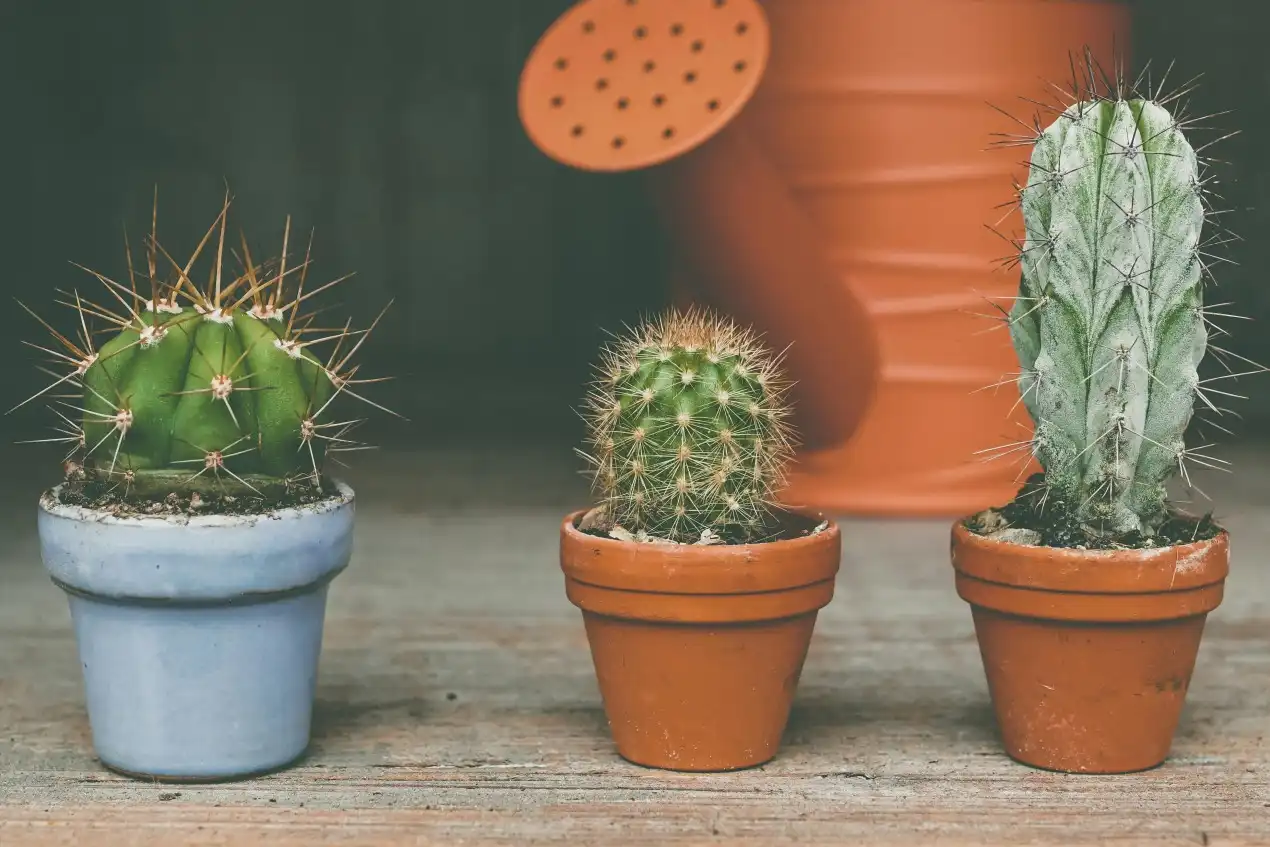
Cacti have a unique and recognizable shape and vibrant flowers that make them a popular addition to some indoor gardens. Certain plants have sharp thorns and spikes that can make them not ideal in households with curious children or pets. Accidental contact with cacti can result in puncture wounds and scratches that, if left untreated, can lead to infection. Some, like the barrel cactus, also have sap, which can cause irritation to the skin.
While not toxic, ingesting certain cacti can cause nausea and vomiting, as well as the risk and discomfort associated with eating sharp spikes. To reduce these risks, keep cacti out of reach and wear gloves when handling them.
Dumb Cane

Dumb cane is a celebrated houseplant because of its lush foliage and interestingly variegated leaves. This plant also contain calcium oxalate in all parts of the plant, so it can pose significant health risks. Even in small doses, this plant can cause severe oral irritation, including burning in the mouth and throat, swelling, and difficulty swallowing. Someone who is drooling, vomiting, or in respiratory distress may have consumed some dumb cane leaves.
When eaten in large quantities, dumb cane can be fatal to both humans and pets. People with sensitive skin may experience skin irritation as a result of handling the plants. When handling this plant, wear gloves and keep it away from the ground to protect small children and pets.
எங்கள் பக்கம் உங்களுக்கு பிடித்திருந்தால் உங்கள் நண்பர்களுடன் பகிர்ந்து கொள்ளுங்கள் & Facebook